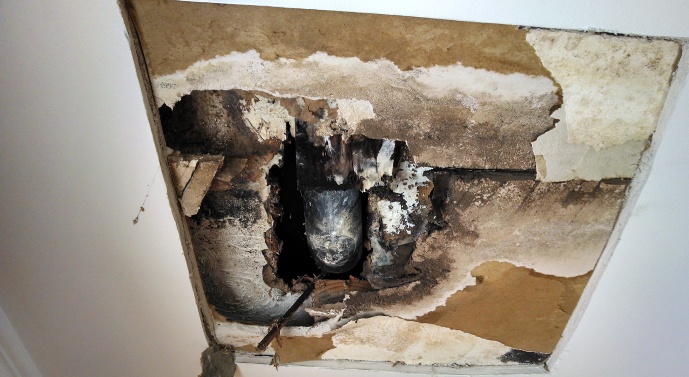Find a Mold Specialist Now
Click or Call, Toll-Free 24/7
Wallemia in your home
Unlike most forms of mold, wallemia can grow under relatively dry conditions. It needs much less moisture than most strains of mold. It also grows more slowly than many other strains of mold. This is good news because you may be able to catch it and have it removed before it does significant damage to your home. Addressing it as soon as possible is crucial because over time, it really can cause very extensive damage that will be quite costly to repair.
Wallemia Damages Homes
All types of mold can damage homes. This strain can be particularly problematic, though, since it is usually found on materials from which it is difficult or impossible to adequately remove mold.
This tan-colored mold is often found on wooden surfaces, including walls, floors and furniture, and in mattresses. Mold cannot be adequately removed from mattresses, so moldy mattresses must be discarded and replaced. Mold cannot be adequately removed from drywall, either, so that too must be removed and replaced. Wooden furniture, floorboards, and even your subfloor may need to be removed and replaced due to mold. You can read more about moldy drywall and about subfloor mold.
It is difficult to remove mold from any wooden surface, because wood is porous and microscopic mold spores get in the pores and even if you can't see them, the mold can begin to grow there. If wood cannot be removed and replaced, it may need to be encapsulated, so that the mold does not grow back. You can schedule a free in-home consultation with a mold removal professional for some advice about whether or not certain items in your home must be replaced or if the mold can be removed from them. We'll tell you how to schedule a free consultation in a bit.
The sooner you can have the mold removed from your home, the better. Taking prompt action to remove the mold can prevent further damage to your home as well as potential health problems.
Health Problems Related to Wallemia
All types of mold can cause health problems. The health problems caused by this particular strain of mold tend to be relatively mild compared to those commonly caused by some other types of mold, though in rare cases serious complications can result.
Typical health problems caused by this strain of mold include allergic reactions and hay fever-like symptoms, including a runny nose, sinus congestion and pressure, headache, sore throat, coughing, and sneezing. Much less commonly, this type of mold results in skin or wound infections, which can be quite serious, even life-threatening if the infection enters the bloodstream.
If you're having health problems you think might be caused by exposure to mold, see your doctor as soon as you can. Let your doctor know you suspect exposure to mold is causing your symptoms. Treatment may include antihistamines, antifungal medications, antibiotics, and other medications based on your symptoms. Usually outpatient treatment will be sufficient but in the event of serious infections, hospitalization may be required.
In addition to receiving the necessary medical care, you'll need to have the mold removed from your home in order to get well. As long as you continue to be exposed to mold, your symptoms will continue and may even get worse.
Removing Wallemia from Your Home
If you need to have mold removed from your home, we suggest scheduling a free consultation with a mold remediation professional. An experienced expert will visit your home, inspect for mold and make sure all areas of mold have been located, advise you on the work that needs to be done, and answer all your questions. He or she will also provide you with a written estimate for the cost of the job.
If you're experiencing mold-related health problems, your doctor may recommend arranging for someone else to handle the mold removal for you so as to avoid further exposure to mold spores that could make your condition worse. In fact, if you're experiencing severe health problems from mold exposure, your doctor may recommend you avoid your home altogether until the mold can be removed. Talk to your doctor if you are considering doing the work yourself.
Even if you are planning to do the work yourself, though, you'll benefit from some expert advice. There's no cost and no obligation, so there is nothing to lose. Just follow the link to find qualified mold removal specialists offering free in-home consultations in your area.
Return From Wallemia To Our Main Mold Types Page
Ref:
Wallemia sebi - MicrobeWiki
Privacy Policy Terms and Conditions Accessibility Do Not Sell My Information Disclaimer Contact Us





